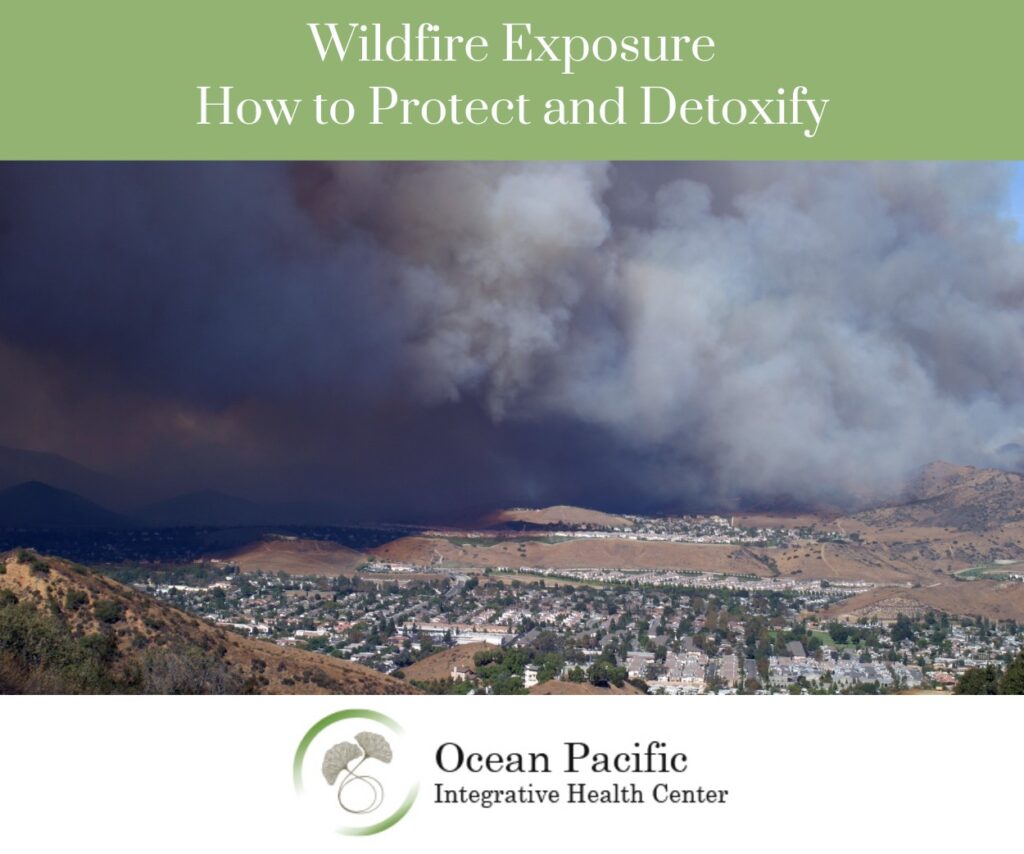
As wildfires increase in frequency and intensity, so does human exposure to smoke, ash, and toxic particulates. In areas near the fires, elevated levels of particulate matter may result in unhealthy air quality conditions, and affected individuals are advised to take steps to reduce their exposure to the smoke.
The effects of smoke and particulate matter range from eye and respiratory tract irritation to difficulty breathing, particularly for those who have chronic lung diseases, such as asthma or chronic obstructive pulmonary disease. If you or a member of your family is experiencing breathing difficulties due to smoke inhalation, please contact your health professional.
Functional medicine offers powerful tools for both acute support and long-term recovery.
If you need emergency assistance in evacuation, call 9-1-1.
For all non-emergency calls for support or updates, call 2-1-1
Treatments
Conventional Approaches:
- Inhalers or corticosteroids for respiratory symptoms
- Emergency care for severe exposure
Natural Approaches:
- First and foremost, reduce exposure to smoke and particulate matter
- Check your smart phone for Air Quality Index (AQI) scale and if it is not designated as “Good”, follow the recommendation below based on your health conditions.
- Stay indoors if you have not been asked to evacuate.
- Reduce physical activity outdoors.
- Create a clean room at home (A good choice is an interior room, with as few windows and doors as possible, such as a bedroom).
- Run an air conditioner or central air conditioning system if you have one. If the air conditioner provides a fresh air option, keep the fresh-air intake closed to prevent smoke from getting inside. Make sure that the filter is clean enough to allow good air flow indoors.
- In extreme cases, relocate to an area not impacted by smoke from fires.
- If you do need to go outdoor, wear a N95 mask
- Run your indoor air-purifier and HEPA filter
- Antioxidant/Detoxification support (vitamin C, glutathione, N-acetylcysteine)
- Nasal rinses and flashes
- Lung supportive herbs and nutrients
- Mild hyperbaric oxygen therapy (mHBOT) to support oxygenation and healing
Testing
- Pulmonary function tests (if symptoms persist)
- Environmental toxin panels after acute phase has ended (optional)
Frequently Asked Questions (FAQ)
Q: What symptoms indicate wildfire exposure? A: Breathing difficulties, eye irritation, coughing, headaches, sinus congestion, fatigue, and brain fog.
Q: How does mild hyperbaric oxygen help? A: It increases oxygen delivery to tissues, reduces inflammation, and speeds recovery from smoke exposure.
Q: How long should I detox after a fire event? A: Depending on the severity, detox protocols may last a few weeks to months.
At Ocean Pacific Integrative Health Center We offer safe and effective wildfire recovery strategies, including mild hyperbaric oxygen therapy and targeted detox programs. Let Dr. Wali guide your return to optimal wellness.
Ocean Pacific Integrative Health Center
Phone: 760-944-9300
www.opintegrativecenter.com
